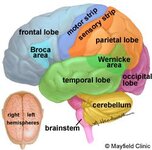- Messages
- 202
- Reactions
- 165
What you are not seeing...
When responding to a stimulus, 80% of sensory input derives from the visual sense. This process requires the use of both sides of the brain in order function. Both the left and right hemispheres of the brain share the information acquired through visual input.
When shooting one-eyed, shooters dont get the full picture. As a matter of fact, without the use of both eyes, many visual functions are limited.
Many shooters initially learn to shoot with one eye and it is a habit that is hard to break. The benefits of shooting two-eyed, however, make learning this skill worthwhile.
Drawbacks of Shooting One-Eyed
There are many disadvantages to shooting with one eye. For those who carry concealed, they do so for self-defense or defense of others. Closing one eye negatively impacts the visual system. Visual acuity decreases, as does depth perception, balance, and spatial orientation.
These are important tasks that must not be sacrificed during serious situations. Shooting under stress complicates things further. Shooting with one eye will decrease the speed and efficiency of information processing. This means that it takes longer for the brain to process the information needed to react. In critical situations, our brain cycles through a process known as the OODA (Observe, Orient, Decide, Act). This is important for threat assessment and reaction time. In addition, after addressing a target, the shooter needs to determine the effectiveness of their actions, and identify the existence of other threats.
Benefits of Shooting Two-Eyed
Shooting with both eyes aids survival. Research has found that both eyes will remain open during a shooting. This is instinctive and cannot be controlled. Therefore, it would be advantageous to learn to shoot with both eyes before being faced with a deadly force situation.
Even though its instinctive, practicing the skill increases success rates. The eyes are complicated organs. They are offset, each interpreting visual stimuli from a slightly different perspective. Each eye takes in visual stimulus, and the information from each eye is transmitted from separate sides of the brain to the other. Field of vision occurs when both eyes converge. This convergence allows us to see in three dimensions, determine distances and speed, allow for spatial orientation, and assists with balance.
Our visual sensitivity and hand-eye coordination increases when binocular vision is employed. Visual sensitivity is the ability to respond to physiological changes. This sensitivity provides the shooter with the ability to respond to changes in the environment. It is more than twice as great using both eyes (duh, right?). The shooter will experience an increase in efficiency in hand-eye coordination, also known as visual-motor task.
Larry243
When responding to a stimulus, 80% of sensory input derives from the visual sense. This process requires the use of both sides of the brain in order function. Both the left and right hemispheres of the brain share the information acquired through visual input.
When shooting one-eyed, shooters dont get the full picture. As a matter of fact, without the use of both eyes, many visual functions are limited.
Many shooters initially learn to shoot with one eye and it is a habit that is hard to break. The benefits of shooting two-eyed, however, make learning this skill worthwhile.
Drawbacks of Shooting One-Eyed
There are many disadvantages to shooting with one eye. For those who carry concealed, they do so for self-defense or defense of others. Closing one eye negatively impacts the visual system. Visual acuity decreases, as does depth perception, balance, and spatial orientation.
These are important tasks that must not be sacrificed during serious situations. Shooting under stress complicates things further. Shooting with one eye will decrease the speed and efficiency of information processing. This means that it takes longer for the brain to process the information needed to react. In critical situations, our brain cycles through a process known as the OODA (Observe, Orient, Decide, Act). This is important for threat assessment and reaction time. In addition, after addressing a target, the shooter needs to determine the effectiveness of their actions, and identify the existence of other threats.
Benefits of Shooting Two-Eyed
Shooting with both eyes aids survival. Research has found that both eyes will remain open during a shooting. This is instinctive and cannot be controlled. Therefore, it would be advantageous to learn to shoot with both eyes before being faced with a deadly force situation.
Even though its instinctive, practicing the skill increases success rates. The eyes are complicated organs. They are offset, each interpreting visual stimuli from a slightly different perspective. Each eye takes in visual stimulus, and the information from each eye is transmitted from separate sides of the brain to the other. Field of vision occurs when both eyes converge. This convergence allows us to see in three dimensions, determine distances and speed, allow for spatial orientation, and assists with balance.
Our visual sensitivity and hand-eye coordination increases when binocular vision is employed. Visual sensitivity is the ability to respond to physiological changes. This sensitivity provides the shooter with the ability to respond to changes in the environment. It is more than twice as great using both eyes (duh, right?). The shooter will experience an increase in efficiency in hand-eye coordination, also known as visual-motor task.
Larry243













